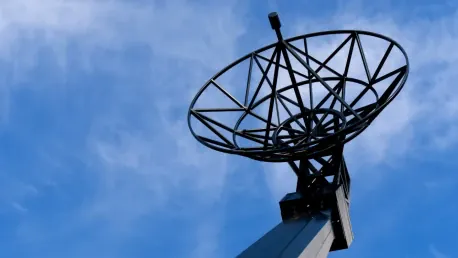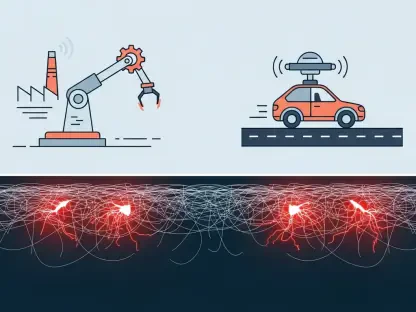The Solway Firth, one of the United Kingdom’s most perilous coastal areas, presents significant challenges for lifeboat missions due to its rapid tidal movements and vast mudflats susceptible to quicksand. Despite advanced marine navigation technologies, some areas remain uncharted, increasing the risk of lifeboats becoming trapped or grounded. To address this issue, a groundbreaking project has been initiated to enhance the safety and efficiency of lifeboat missions by utilizing satellite data to map safe navigational routes.
The Dangers of Solway Firth’s Estuary
Navigational Challenges in Treacherous Waters
The Solway Firth’s estuary is notorious for its rapid tidal movements and extensive mudflats, which pose significant navigational challenges for lifeboat crews. These conditions are particularly hazardous during high-speed rescue missions, where the risk of lifeboats becoming trapped or grounded is heightened. Despite the use of advanced marine navigation technologies, certain areas remain uncharted, further complicating rescue operations. The unpredictable nature of the estuary’s topography adds another layer of complexity, with channels frequently shifting and creating false safe passages. These ever-changing dynamics make it imperative for crews to possess accurate and up-to-date information, underscoring the need for innovative solutions to ensure their safety while performing crucial rescue operations.
Manual Depth Soundings and Their Limitations
Before the implementation of the “Safe Passage” project, lifeboat crews relied on manual depth soundings to navigate the estuary. However, the rapid changes in tidal passages often rendered these measurements obsolete, necessitating frequent course adjustments that could delay rescue operations and endanger lives. The need for a more reliable and efficient method of mapping navigable routes became increasingly apparent. Traditional depth soundings, though essential, could not keep pace with the natural alterations that constantly reshaped the estuary’s floor. This limitation meant that crews often had to adapt on the fly, using their instincts and experience to maneuver through uncertain waters. The inherent risks associated with this approach called for a technological advancement to provide a consistent and dependable means of charting safe paths through these treacherous waters.
The “Safe Passage” Project
Leveraging Synthetic Aperture Radar (SAR) Data
The “Safe Passage” project, spearheaded by the University of Strathclyde’s Applied Space Technology Laboratory in collaboration with Nith Inshore Rescue, aims to address the navigational challenges in the Solway Firth by leveraging synthetic aperture radar (SAR) data from satellites. SAR data is particularly useful because it provides accurate, regular mapping of moving channels and can differentiate between sand and water under various conditions, including nocturnal and cloudy weather. The application of SAR technology represents a significant advancement, offering precision and reliability that surpasses conventional methods. Unlike optical satellite data, which can be hindered by low visibility, SAR data is unaffected by darkness or cloud cover. This makes it a robust tool for ensuring 24/7 monitoring of the estuary, greatly enhancing the ability to maintain updated and reliable navigational charts regardless of external environmental factors.
Enhancing Safety and Efficiency
The radar data used in the project offers a safer, more reliable method for identifying minimum navigable depths and maintaining consistent routes. This technology significantly enhances the safety and efficiency of rescue missions, allowing lifeboat crews to navigate the estuary with greater confidence and precision. The updated satellite-generated charts and waypoints provided to the volunteers are supplemented by the crew’s local knowledge and skills, further improving the overall effectiveness of rescue operations. The integration of SAR data with practical experience creates a robust system that not only enhances immediate rescue capabilities but also instills a higher degree of preparedness in crews. This synergy between technological innovation and local expertise ensures that every mission can be conducted with optimal safety, reducing the inherent hazards of operating in one of the UK’s most treacherous coastal regions.
Overcoming Operational Challenges
Cost-Effective and Efficient Mapping Service
Professor Malcolm Macdonald, the principal investigator, emphasizes the operational challenges of providing a cost-effective and efficient mapping service to a volunteer rescue crew. The team found that while optical satellite data is effective in other regions, the persistent cloud cover on Scotland’s west coast necessitates the use of radar data. Although radar data is complex and challenging to interpret, it penetrates clouds and proves to be a suitable alternative for mapping the estuary. The ability to utilize radar technology without the hindrance of weather conditions ensures continuous monitoring and data collection. This robustness is crucial for developing comprehensive navigational charts that rescue crews can rely on. Despite the complexity of interpreting SAR data, the benefits it offers in terms of accuracy and reliability far outweigh the challenges, making it an indispensable resource for enhancing safety and efficiency in rescue missions.
Collaboration with the European Space Agency (ESA)
To further improve the charting system, the team collaborates with the European Space Agency (ESA). They envision broadening the scope of this technology to cover more extensive tidal flats globally, spanning 13 million hectares, thereby improving accessibility and safety. The ultimate goal is to commercialize the data feed service, creating a revenue stream to support independent rescue services. Collaboration with the ESA not only enhances the project’s current capabilities but also sets the foundation for significant advancements in global marine navigation. The commercialization aspect of the data service aims to ensure the project’s sustainability, providing continuous support for volunteer rescue crews and enabling them to maintain heightened safety standards. This strategic expansion presents an opportunity to revolutionize how tidal flats and estuaries are navigated worldwide, offering a transformative solution to the universal challenge of maritime safety.
Real-Life Applications and Future Prospects
Successful Rescue Operations
The project’s success was notably demonstrated during a rescue operation on the Cumbrian coast, where two casualties were safely evacuated from a car trapped by coastal flooding. This real-life application highlights the significant potential of the “Safe Passage” project in enhancing the safety and efficiency of rescue missions in treacherous coastal waters. The timely and effective use of satellite data in this rescue scenario underscores the technology’s practical benefits, providing a clear example of how innovative approaches can lead to successful outcomes. The seamless integration of SAR data and the crew’s navigational skills allowed for a swift and efficient response, showcasing the project’s critical role in modernizing rescue operations and ensuring heightened safety protocols in challenging environments.
Broader Implications for Marine Navigation
The Solway Firth, located in the United Kingdom, is notorious for being one of the country’s most dangerous coastal regions, posing significant challenges for lifeboat operations. This peril is largely due to its swift tidal shifts and expansive mudflats that are prone to quicksand, endangering rescue missions. Although modern marine navigation technologies are employed, certain terrains remain uncharted, heightening the risk of lifeboat entrapment or grounding during missions. Recognizing the necessity for improved safety and operational efficiency, an innovative initiative has been launched. This groundbreaking project seeks to enhance the safety and effectiveness of lifeboat missions by leveraging satellite data to chart secure navigational routes. By mapping out these safe routes, the project aims to mitigate the hazards faced by lifeboat crews, ensuring they can perform their vital rescue tasks with a higher degree of safety and reliability, thus safeguarding human life and minimizing mission risks.









